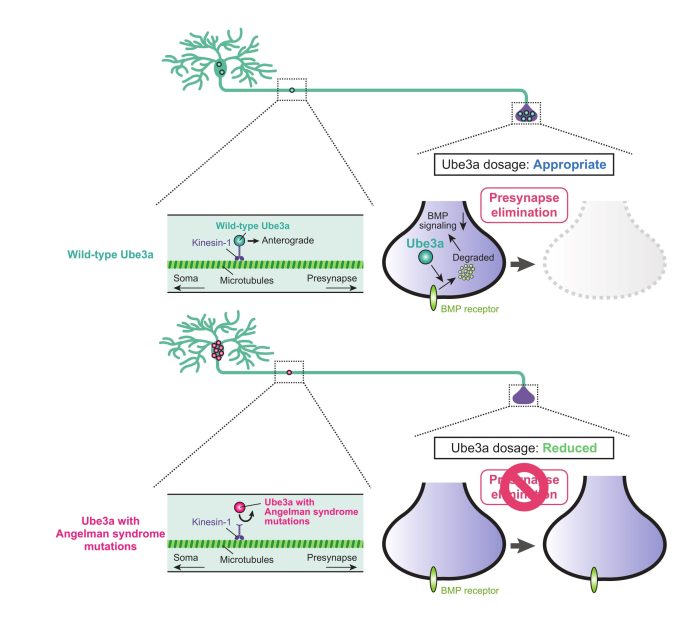Researchers from the University of Tokyo reveal how the presynaptic Ube3a E3 ligase, a causal factor in Angelman syndrome, eliminates neural chat. The study helps find a better drug target for the Angelman syndrome treatment.
Neurons chat through electrical signals, transmitting information via connection sites between neurons—the synapses. After birth, the number of synapses increases. During childhood, the brain starts to mature and removes many unnecessary synapses. But sometimes, the development of the nervous system goes awry, leading to developmental disorders.
Kotaro Furusawa, an Assistant professor and the first author of the study, says that their team is interested in understanding “how the brain matures functionally through genetic information and external experience.”
Furusawa and his team hoped to reveal the molecular mechanism involved in synaptic elimination during neural development and offer insights into developmental disorders such as Angelman syndrome.
Angelman syndrome is a rare genetic disorder that affects neuronal development and causes physical and intellectual disabilities. In patients with Angelman syndrome, a gene called Ube3a does not function well, which prevents synapse elimination during development. On the other hand, abnormally high Ube3a leads to precocious synapse elimination and causes autism spectrum disorders.
How the disruption of Ube3a in the presynaptic neurons (that send information to postsynaptic neurons) leads to synaptic defects has been unknown until now. “[It is due to] the technical difficulties in handling the neural circuits of the developing mammalian brain," Furusawa explains.
His team probed the sensory neurons of the common fruitfly, Drosophila melanogaster, and successfully identified the Ube3a and its inner workings. That helped them reveal its role in synapse elimination.
“It was challenging to identify the main factors involved in the synapse elimination,” adds Furusawa. “We resolved it by an exhaustive search through genetic screening.”
They discovered that Ube3a removes synapses by degrading presynaptic receptors called Bone Morphogenetic Protein (BMP) receptors, which are necessary for synapse formation. Disrupting this activity leads to an abnormal number of synapses. So, the treatments for Angelman syndrome should target BMP receptors.
This is the first study to show that the lack of presynaptic Ube3a E3 ligase disrupts synaptic pruning. The finding enabled the team to suggest a new mechanism by which genetic mutations and abnormal Ube3a dosage lead to impaired synaptic transmission and hinder brain maturation.
The findings appear in the latest issue of the journal Science.

Presynaptic Ube3a activity is associated with abnormalities of synapse elimination.
Ube3a is transported to the presynapses via Kinesin motor proteins. Presynaptic Ube3a promotes presynapse elimination by suppressing Bone Morphogenetic Protein (BMP) signaling.
Useful resources for journalists
Journal article: Kotaro Furusawa, Kenichi Ishii, Masato Tsuji, Nagomi Tokumitsu, Eri Hasegawa, and Kazuo Emoto. 2023. Presynaptic Ube3a E3 ligase promotes synapse elimination through downregulation of BMP signaling.
Science.doi: 10.1126/science.ade8978


